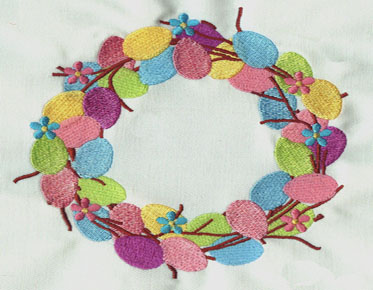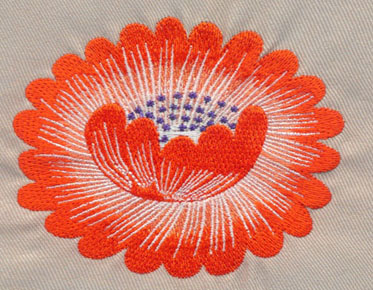A Complete Guide for Custom Embroidery Digitizing
We love to know about all the new trends in technology. And in recent years, digitizing embroidery has become one of them. With the help of this amazing technique, you can easily personalize your clothes and add sophistication to them.
One
of the most beneficial features we get from technology is the ease with which
we can get what we want right on our doorstep. Now, we don't have to go out
every time we need something. To be honest, these online services not only save
us valuable time, but also ensure quality. So, if you are someone looking for a
custom embroidery digitizing service online,
and you clicked on the article to understand its importance, you are welcome to
find the right place.
What
is embroidery digitizing?
Simply put, embroidery digitizing or logo embroidery digitizing is the process of converting artwork into a digital file that allows the embroidery machine to recognize the path of the needle. The process is not mechanized, and when done in the right way, virtuoso digitizing is treated as an art form. Most embroidery machines come with their own software that allows us to manipulate their activities while reading instructions from digitized files.
Since the embroidery machine cannot read the same files as your computer, you will need to digitize the logo or any other design in a format that the machine can understand before it can work. From the point of view of an embroidery digitizer, this usually involves converting a JPG or PNG file of a client company logo or artwork into an embroidery file. The type of embroidery machine you will use defines the embroidery file type.
Embroidery
digitizer follows the process
Like any other mechanical work, the Custom Embroidery digitizing service online is done through the proper process to provide the desired results. One of the most critical aspects of this process is understanding design. The digitizing process will be affected by the size, complexity and location of the artwork. An efficient embroidery digitizer should consider fabric and thread (theoretically, all digitizers if they are excellent).
The
process requires the following steps:
Step
1: Prepare and upload your work to digital software
The first thing an embroidery digitizer does is create artwork suitable for digitizing. If a client provides artwork, it is evaluated against fixed digital criteria. The size of the design must be considered. Why? Well, because not every piece of art made for print media is suitable for embroidery.
The next round is modification and simplification, where the embroidery digitizer adjusts everything as needed. Most of the time, design details such as Outlines need to be eliminated, and the only thing left is the design name or small image. In addition, this step includes rearranging and enlarging the text as needed.
Step
2: Determine stitch type
Determining stitch types is another essential thing because there are a variety of stitch types out there. All of these stitch types offer different textures, looks, and so on. Each stitch type has a specific stitch length that must be kept in line of sight. Another thing to consider when choosing a stitch type is the type of fabric and the "push and pull" it provides. Common stitch types are:
Satin
stitching
If you are looking online for a custom embroidery digitization service to embroider text, then satin stitch will be the type you need. Satin stitch provides a longer thread length, resulting in a shiny effect. It's perfect for lettering. 12.1mm is the maximum stitch length provided by the satin stitch type. The most popular applications of satin stitches are:
Words
and text
Outline
Get a sparkling look
Straight
needle
This stitch type is well suited for embroidery because it requires a base stitch, in which stitches are finished in straight lines to create a pattern. Thick thread can also be created by repeating the straight stitch process over and over again. Not only that, but professionals use the process to make curved shapes. Straight pin type is great for:
Detail
embroidery work
Outline
Shading method
Filling
stitch
The third most common type of stitch is the stuffed stitch. Filling stitch is also called tatami stitch or cut stitch, as the name suggests, used for filling design. To give the needlework a braided effect, fill the stitch and use alternate lines. The maximum length of a filled stitch is 4 mm. The most typical uses for filling stitches are:
Fill
space
Create
texture appearance
More
durable applications
A larger design
Step
3: The final step
The
third and final step is about giving the stitching direction, choosing the
color of the thread, and transferring the file to the embroidery machine. If
you seek a custom embroidery digital service professional online, you will have
the opportunity to receive all content professionally. As the professional
embroidery digitizer has many years of work experience, it can guide customers
to achieve the expected results according to their needs. Because there are
many factors and directions that can affect the results of your splicing, each
project should be approached uniquely and carefully.
Technology affects all areas of life, and clothing or fashion is one of them. In the past, all embroidery work was done by hand. Because the complexity and barriers are huge, people are thinking about finding something that can be mitigated, and that's when digital service providers enter the market.
Concatenation is better if you are using correctly set files. There should be no shortcuts in the process, and with so many organizations now offering digitization, finding the right person or company to do the job is vital.
We
have many professional embroidery digitizers online for logo embroidery
digitizing and custom embroidery digitizing services. They work hard to fulfill
orders based on their experience and reputation. To begin your embroidery
project, please contact us immediately.



